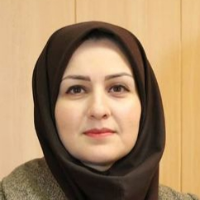Explanation of Matter Importance in Perceptual Hierarchies of Safavid Era Mosques’ Spaces based on the Mulla Sadra’s Views; Case Study: Sheikh Lotfollah Mosque
Meaning perception in the architecture of the Safavid Era requires reviewing the thoughts of Shiite philosophers of that time. Substantial motion theory is one of the most important thinking schools of that era. According to Islamic philosophy, the truth of perception is not limited to material hierarchy, while the matter can provide the field for understanding meanings at different hierarchies by relying on the substantial motion theory. Safavid Mosques represent this thought in architecture. Perception hierarchies in Safavid mosques, including Sheikh Lotfollah Mosque, rely on the substantial motion theory of Mulla Sadra- emphasis on perception movement from the existence of the matter or substance to inexistence- providing the field for journeying the perceptual hierarchies from appearance to the essence. Therefore, this is multidisciplinary, qualitative, and case-study research. In the theoretical foundations part, this study explained three pillars in the perceptual hierarchies of Safavid Mosques by examining the importance of the matter in epistemological topics proposed by Mula Sadra and its relationship with the motion principle. The type of perception in Sheikh Lotfollah was then investigated in each pillar to find the importance of matter and body in the perception of mosques in the Safavid Era regarding the main purpose of this study. According to the principle of journeying from matter to meaning, the main question is about the importance of the matter in each perceptual hierarchy of Safavid Mosques. It is also asked how the substantial motion theory by Mulla Sadra is manifested in perceptual hierarchies of the Safavid Era. In terms of the importance of the matter in the perception, the results indicate that meaning perception in Safavid mosques, particularly Sheikh Lotfollah Mosque includes three pillars (stillness, motion, and unity), which are consistent with perceptual hierarchies of Mulla Sadra. In the stillness pillar, which is the least perceptual hierarchy (because of being mixed with matter), perceptions are confined to sensory issues. In the motion pillar, however, imagination power allows for achieving a spiritual perception of material affairs. Finally, in the unity pillar, light and transparency of space allow the audience to be united with the space's reality. The last pillar includes intellectual perceptions.
-
Integrated algorithms in analysis of architecture and environment interaction- Case study: Stepped villages of Iran
Elham Zamani, Behshid Hosseini*, Hossein Zabihi
Journal of Applied Researches in Geographical Sciences, -
Analytical Comparison; On the Challenges and Opportunities of Architectural Components Influencing Urban Branding in Yazd and Rasht
Rana Abbasi, *, Farah Habib
Journal of Urban Economics and Planning, -
Empty space; The place of manifestation and perception of meaning in Islamic architecture (Investigating the effect of empty spaces on the audience, based on Mulla Sadra's views)
, Seyed Behshid Hosseini *,
Islamic Art Studies, -
Analyzing the Effective Components of Improving the Quality of Teaching Architectural Design to Conservatory Students
Zeynab Moghadas, *, Hossein Zabihi
Journal of Educational Planning Studies, -
Examining the Position of Movement in the Perceptual Promotion of Mosques, Based on the Epistemological Views of Mulla Sadra(Case Study: Hakim Mosque)
, Seyed Behshid Hosseini *, Azadeh اshahcheraghi
Journal of Intercultural Studies,





